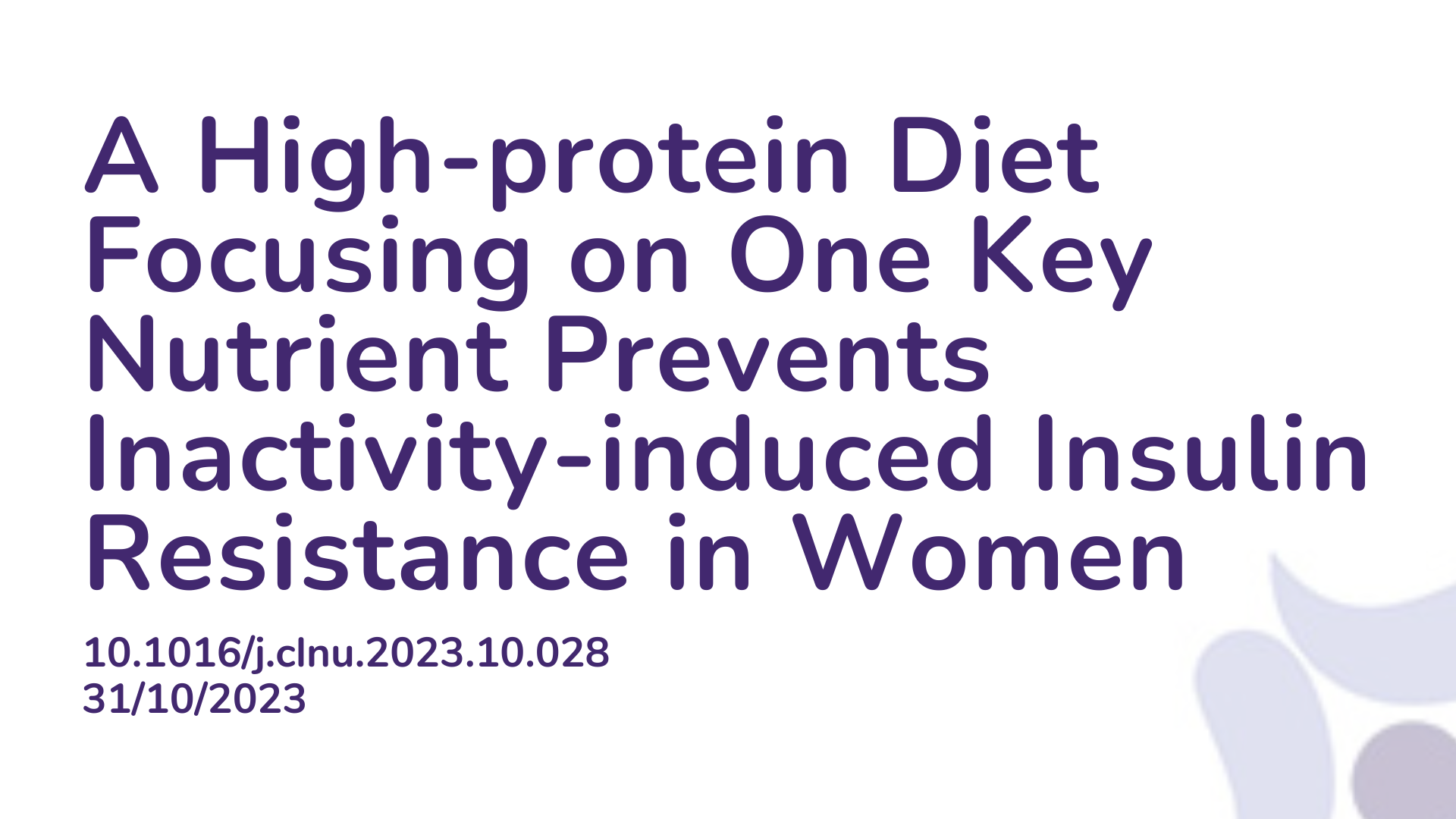Summary:
Muscle loss and insulin resistance can result from a sedentary lifestyle. Leucine, a branched-chain amino acid (BCAA), plays an important role in modulating glucose metabolism and has been theorized to play a role in preventing muscle loss and insulin resistance. This study aimed to assess the effectiveness of a high BCAA diet in preventing insulin resistance during prolonged sedentary periods such as bed rest. The study involved two groups of healthy, young women receiving either a calorie neutral diet (where energy consumption and energy expenditure are the same) with 1g of protein per kg/day, or a high BCAA diet. The results showed that after 60 days of bed rest, lean body mass decreased in both groups, however fat mass remained unchanged in both groups. After a longer bed rest, there was a significant decrease in glucose uptake in the 1g of protein diet group, while the high BCAA group exhibited no significant change. This means that in healthy women, a high-protein BCAA-enriched diet proved effective in preventing inactivity-induced insulin resistance during prolonged bed rest.
Abstract:
Background and aims: Muscle inactivity leads to muscle atrophy and insulin resistance. The branched-chain amino acid (BCAA) leucine interacts with the insulin signaling pathway to modulate glucose metabolism. We have tested the ability of a high-protein BCAA enriched diet to prevent insulin resistance during long-term bed rest (BR). Methods: Stable isotopes were infused to determine glucose and protein kinetics in the postabsorptive state and during a hyperinsulinemic-euglycemic clamp in combination with amino acid infusion (Clamp+AA) before and at the end of 60 days of BR in two groups of healthy, young women receiving eucaloric diets containing 1 g of protein/kg per day (n=8) or 1.45 g of protein/kg per day enriched with 0.15 g/kg per day of BCAAs (leucine/valine/isoleucine=2/1/1) (n=8). Body composition was determined by Dual X-ray Absorptiometry. Results: BR decreased lean body mass by 7.6±0.3% and 7.2±0.8% in the groups receiving conventional or high protein-BCAA diets, respectively. Fat mass was unchanged in both groups. At the end of BR, percent changes of insulin-mediated glucose uptake significantly (p=0.01) decreased in the conventional diet group from 155±23% to 84±10% while did not change significantly in the high protein-BCAA diet group from 126±20% to 141±27% (BR effect, p=0.32; BR/diet interaction, p=0.01; Repeated Measures ANCOVA). In contrast, there were no BR/diet interactions on proteolysis and protein synthesis Clamp+AA changes in the conventional diet and the high protein-BCAA diet groups. Conclusion: A high protein-BCAA enriched diet prevented inactivity-induced insulin resistance in healthy women.
Article Publication Date: 31/10/2023
DOI: 10.1016/j.clnu.2023.10.028



